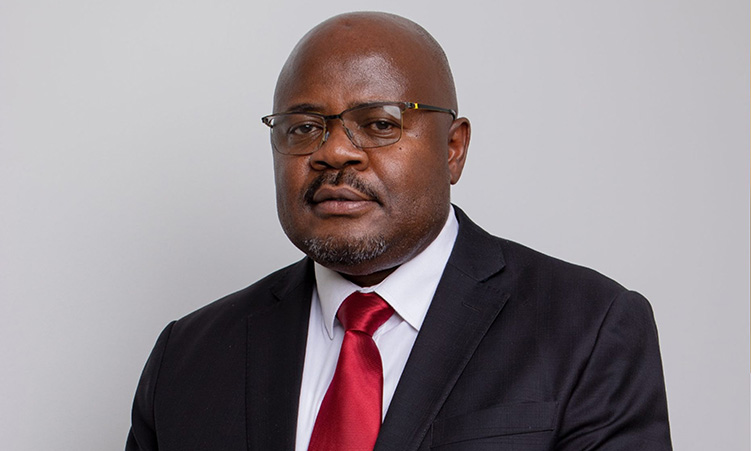VETERANS outsmarted the youth and women of United Democratic Front as a select group of 20 met the whole of Saturday to compile the list of 72 people for the November parliamentary elections.
Friend and foe were left in awe as veteran politician and former Governor of the Kunene Region Simpson Tjongarero ended up second behind UDF leader Justus //Garoëb.Only one woman made it into the top five positions.If elected to the National Assembly, something that is 90 per cent possible based on the party’s support base over the past 20 years, Tjongarero could make history by being the first politician to make a comeback to active politics at the age of 67.Although he had been the first vice president of the party over the past years, many had seen that as a ceremonial role and regarded him as an ‘elderly statesman’ because of his role in the country’s politics before Independence and shortly after 1990.He served 10 years as Governor and was regarded by many as somebody who had retired from active politics.On Saturday his position as first vice president was used to justify his return to the list.The second vice president, Abius !Auchab, did not stand because he is a regional councillor for the Dâures constituency.Also not available was the party’s secretary general Dudu Murorua, as he is the Governor of Kunene.Only five of the first 15 names on the list are women while 12 of the last 15 names on the list of 72 are also female members of the party.Although the only female in the top five, Dorca Shikongo, can be regarded as youthful, she came in at number four mainly because of her position as secretary general of the party’s women’s league.Women have made great strides in the UDF lately and became involved heavily in the preliminaries prior to Saturday.As //Garoëb put it, ‘women have boarded the train and UDF is no longer a men’s game but a family game’.The only difference was the strategic placements of women on the list.Reginald Roman, Secretary General of the Youth League, is eighth on the list.’We looked at the calibre of people and not necessarily their educational qualifications. We also looked at their behaviour and standing in the communities. Also, we advised the youth not to hasten to grab a position in the National Assembly,’ //Garoëb said before the party released the list.EXPERIENCESome youth members said they were led to understand that they first needed to pick up experience at local authority level before jumping to the national level.’It is their right (to go to the National Assembly) but it is best to start at local government level and learn about the people they want to represent. By the time they come to the National Assembly they will have known the needs of the people and be ready to serve them,’ //Garoëb said.The list of 72 was compiled by the party’s executive committee (politburo) after they received names from regions and wings and then presented them to the central committee for endorsement.’The most difficult situation in the life of any party is to nominate suitable candidates for the National Assembly. It is only human that everybody wants to be a candidate. We had a great number of people who hoped to get on the list but only some could make it,’ //Garoëb said.THORNY ISSUESNormally a congress (which should take place every two and half years, according to the UDF constitution) would elect the list of 72 but //Garoëb said they used ‘the democracy in the name United Democratic Front’ and also his ‘prerogative’ as president of the party to do it differently.It is the second time a different method was used. In 2004 the party argued they were pressed for time and also compiled the list at the head office.’We had thorny issues but there were no fights because everyone had enough time to put across his or her case. We are preparing ourselves for a much bigger number in parliament,’ //Garoëb said.UDF currently has three members in the National Assembly but party insiders differ on the target for the November elections.While the women are on record for pushing for 18 seats, the youth were eyeing around eight seats.’We are not naïve to say we will win the elections but we will get our share. It will be a sizeable share,’ //Garoëb said without committing himself to numbers.In 2004 the party submitted only 30 candidates’ names.’This time around we are showing our intentions. We are pushing for more people in Parliament,’ said one member.The party has been consistent in its performance since 1989.In the first elections of 1989 they had 37 874 votes but it nose-dived to 13 309 in 1994 and 15 685 in 1999 as there was an overall voter apathy in the country which affected all parties. In 2004 the party got 29 336 votes and thus increased its representation in the National Assembly from two to three.Although the Kunene Region, especially the surroundings of Khorixas, is seen as a UDF stronghold, its biggest number of votes in the 2004 election was in the Erongo Region where the party garnered 8 127 votes compared to 6 511 in Kunene and 5 880 in Khomas.Erongo also had the best support in 1999, followed by Kunene and Khomas.Half of the candidates on this year’s list of 72 are women but they could be on the losing side if the party wins five seats, as only one of the top five candidates is female.Of the top 10 on the list, four are women.For the UDF women to get more than the 33 per cent representation as is the case in the National Assembly at present, the party must get at least 10 seats.christof@namibian.com.na
Stay informed with The Namibian – your source for credible journalism. Get in-depth reporting and opinions for
only N$85 a month. Invest in journalism, invest in democracy –
Subscribe Now!










